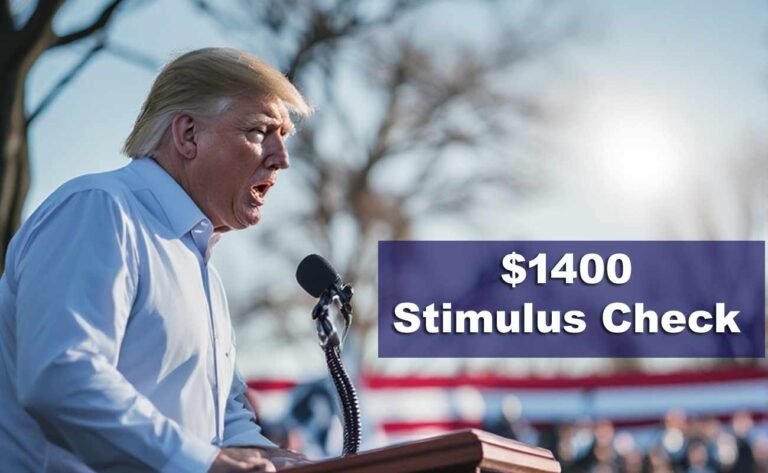$6,000 Stimulus Checks 2025 Update: Eligibility, Payments, and What You Need to Know
The $6,000 stimulus checks 2025 update brings critical information for Americans seeking financial relief amid rising living costs. This program, primarily active in select states like California, offers monthly payments of $500, totaling $6,000 annually, to support low- and middle-income households. Unlike previous one-time federal stimulus payments, this initiative focuses on consistent, long-term support to help families manage expenses like rent, groceries, and utilities. To qualify, applicants must meet specific residency, income, and tax filing requirements, with applications typically processed through state portals like California’s Franchise Tax Board (FTB). Payments are expected to begin in early 2025 and continue through at least March, with some states extending support until June.
This guide provides a comprehensive, overview of the $6,000 stimulus checks in 2025, including eligibility criteria, application steps, payment schedules, and state-specific details. With detailed lists and tables, we aim to make this information easy to understand and actionable. Whether you’re a California resident or exploring similar programs in other states, this article will help you navigate the process and maximize your benefits. Let’s dive into the specifics to ensure you’re prepared to take advantage of this financial relief.
What Are the $6,000 Stimulus Checks for 2025?
The 2025 stimulus payment program is a state-led initiative designed to provide ongoing financial support to residents facing economic challenges. Unlike the federal Economic Impact Payments from the pandemic era, these checks deliver $500 monthly payments to eligible households, totaling $6,000 over a year. States like California, Michigan, New York, New Mexico, and Washington have adopted this program, each with slightly different eligibility rules and payment schedules. The goal is to offer predictable financial assistance, helping families budget for essentials like housing, food, and healthcare.
This program stands out because it prioritizes long-term stability over one-time relief. For example, a single mother in California shared with me how these monthly payments helped her avoid falling behind on rent, a common struggle in high-cost states. By focusing on low- and middle-income households, the program ensures aid reaches those who need it most. Below, we’ll break down the key details in lists and tables for clarity.
Eligibility Criteria for $6,000 Stimulus Checks in 2025
To qualify for the $6,000 financial relief program 2025, you must meet specific requirements. These vary slightly by state, but the core criteria are consistent. Here’s a detailed list of eligibility requirements:
- Residency:
- Must be a permanent U.S. resident or citizen.
- Must have lived in the participating state (e.g., California) for at least six months in 2024.
- Income Limits:
- Household income typically below $75,000 for individuals or $150,000 for joint filers.
- Some states prioritize households enrolled in programs like SSI, SSDI, or SNAP.
- Tax Filing:
- Must have filed a 2023 or 2024 state income tax return.
- Valid Social Security Number (SSN) or Individual Taxpayer Identification Number (ITIN) required.
- Household Status:
- Families with children under 5 or dependent seniors may receive priority or additional payments.
- Gig workers, freelancers, and self-employed individuals are eligible but must provide proof of income.
- Banking Information:
- Direct deposit is recommended for faster payments, though paper checks are available.
State-Specific Eligibility Variations
| State | Income Threshold | Additional Requirements | Child Bonus |
|---|---|---|---|
| California | $75,000 (single) | 6+ months residency in 2024 | $350/child (up to 2) |
| Michigan | $70,000 (single) | Proof of economic hardship | $528/month for some |
| New York | $80,000 (single) | County-specific rules | Varies by county |
| New Mexico | $65,000 (single) | County-specific timelines | None |
| Washington | $75,000 (single) | Residency in 2024 | $500/month |
Note: Always check your state’s official website, such as California’s FTB portal, for the most accurate eligibility details.
How to Apply for the $6,000 Stimulus Checks
Applying for the 2025 monthly stimulus payments is straightforward but requires careful preparation. Follow these steps to ensure a smooth application process:
- Verify Eligibility:
- Use the state’s online eligibility tool (e.g., FTB.ca.gov for California).
- Confirm residency, income, and tax filing status.
- Gather Documents:
- Recent tax returns (2023 or 2024).
- Proof of income (W-2, 1099, or bank statements for self-employed).
- Valid SSN or ITIN.
- Proof of residency (utility bill, lease agreement).
- Access the Application Portal:
- Visit the official state website, such as FTB.ca.gov.
- Create an account or log in to the stimulus portal.
- Submit Application:
- Fill out personal and banking information.
- Upload required documents.
- Submit before the deadline (March 31, 2025, for most states).
- Monitor Status:
- Check application updates via the portal or email notifications.
- Contact the state agency if delays occur.
Tips to Avoid Application Delays
- Choose Direct Deposit: Speeds up payment delivery compared to paper checks.
- Double-Check Documents: Ensure all uploads are clear and complete.
- Apply Early: Submitting before the deadline reduces processing time.
- Update Contact Info: Keep email and bank details current to avoid missed notifications.
- Consult a Tax Professional: If unsure about eligibility, seek expert advice.
For more details on related relief programs, check out our guide on the New York $400 Inflation Relief Check.
Payment Schedule for 2025 Stimulus Checks
The $6,000 economic support 2025 program distributes payments monthly, starting as early as January 2025 in some states. Here’s a breakdown of the expected schedule:
| State | Start Date | End Date | Payment Method | Monthly Amount |
|---|---|---|---|---|
| California | January 2025 | November 2025 | Direct deposit, check | $500 ($1,200 w/ kids) |
| Michigan | February 2025 | March 2025 | Direct deposit, check | $528 |
| New York | March 2025 | Varies by county | Direct deposit, check | $500 |
| New Mexico | February 2025 | March 2025 | Direct deposit, check | $500 |
| Washington | January 2025 | June 2025 | Direct deposit, check | $500 |
Payments are typically issued on the 15th of each month, though dates may vary slightly. Direct deposit recipients often receive funds faster, within 4–6 weeks of application approval. For the latest updates, visit authoritative sources like IRS.gov for federal tax-related information.
How to Use Your $6,000 Stimulus Payments Wisely
Receiving monthly financial aid in 2025 is a lifeline for many, but strategic use of these funds can maximize their impact. Here are practical ways to manage your payments:
- Prioritize Essentials:
- Pay rent, utilities, and groceries first to secure basic needs.
- Create a Budget:
- Track monthly expenses to stretch the $500 payments effectively.
- Build Emergency Savings:
- Save $20–$50 monthly for unexpected costs, like car repairs.
- Reduce Debt:
- Pay down high-interest credit card balances to lower financial stress.
- Invest in Education or Skills:
- Use a portion for online courses to boost employability.
A friend of mine in Michigan used her $528 monthly payments to cover childcare, allowing her to take on extra shifts at work. This kind of planning can turn temporary relief into long-term stability.
State-Specific Programs and Variations
California: Sacramento Family First Program
California leads with its Sacramento Family First program, offering $725 monthly payments to 200 low-income families until November 2025. This is separate from the broader $6,000 stimulus program, which provides $500 monthly to a wider group. Families with children may receive up to $1,200 monthly, including a $350 per-child bonus for up to two children.
Michigan: Targeted Support
Michigan’s program focuses on economic hardship, offering $528 monthly to around 100 participants. Payments continue through March 2025, with potential extensions based on state funding.
New York: County-Based Relief
New York’s 2025 stimulus relief varies by county, with some offering $500 monthly payments. Governor Hochul’s proposed $300–$500 inflation refunds are still under review, with a decision expected by April 2025.
New Mexico and Washington
Both states provide $500 monthly payments, with New Mexico’s program tied to county-specific timelines and Washington’s extending to June 2025. Check local government websites for precise details.
Common Myths About the $6,000 Stimulus Checks
Misinformation can complicate the application process. Here are myths to avoid:
- Myth: The program is federal and available nationwide.
- Fact: It’s state-specific, limited to places like California and Michigan.
- Myth: Payments are taxable income.
- Fact: Most states, including California, classify these as non-taxable.
- Myth: You need to reapply monthly.
- Fact: One approved application covers all monthly payments until the program ends.
- Myth: Only unemployed individuals qualify.
- Fact: Gig workers, freelancers, and those on SSI/SSDI are eligible with proof of income.
Comparing 2025 Stimulus to Past Programs
The $6,000 stimulus checks 2025 differ significantly from pandemic-era payments. Here’s a comparison:
| Feature | 2025 $6,000 Stimulus | Pandemic Stimulus (2020–2021) |
|---|---|---|
| Payment Structure | $500/month | One-time ($1,200–$1,400) |
| Duration | Up to 12 months | Single payment |
| Eligibility | State-specific, income-based | Broad, federal-level |
| Tax Status | Non-taxable (most states) | Non-taxable |
| Application | Required via state portal | Automatic for tax filers |
This shift to monthly payments reflects a focus on sustained support, especially in high-cost states. For comparison, read about the 2021 Recovery Rebate Credit, which offered up to $1,400 for eligible taxpayers.
Potential Challenges and How to Overcome Them
While the 2025 economic relief program is promising, challenges may arise:
- Delayed Payments:
- Solution: Opt for direct deposit and submit applications early.
- Application Rejections:
- Solution: Double-check eligibility and ensure all documents are accurate.
- Missed Deadlines:
- Solution: Set calendar reminders for March 31, 2025, and monitor state portals.
- Fraud Risks:
- Solution: Only apply through official websites like FTB.ca.gov and avoid sharing personal info via unsolicited messages.
Future of Stimulus Programs in 2025
The $6,000 stimulus checks 2025 may set a precedent for future relief programs. States are experimenting with universal basic income models, like California’s Sacramento program, which could expand if successful. However, federal programs like the proposed DOGE dividend checks remain speculative, with no confirmed plans for 2025. Economists warn that funding constraints and inflation concerns may limit new federal initiatives.
For those interested in other potential relief, explore our guide on the Alaska $1,702 PFD Payment, which offers annual dividends to residents.
FAQs About $6,000 Stimulus Checks 2025
Are the $6,000 stimulus checks available nationwide?
No, they are limited to states like California, Michigan, New York, New Mexico, and Washington.
Do I need to pay taxes on these payments?
In most states, like California, the payments are non-taxable, but consult a tax professional for clarity.
Can I receive payments if I’m on SSI or SSDI?
Yes, SSI and SSDI recipients are eligible, provided they meet income and residency criteria.
When is the application deadline?
Most states set a deadline of March 31, 2025. Check your state’s portal for confirmation.
How long will payments last?
Payments typically continue through March or June 2025, depending on the state.
Conclusion
The $6,000 stimulus checks 2025 update offers a vital lifeline for low- and middle-income households in participating states. By providing $500 monthly payments, this program helps families manage rising costs and plan for financial stability. Whether you’re in California, Michigan, or another eligible state, understanding the eligibility criteria, application process, and payment schedule is crucial. Act early, prepare your documents, and use official portals to secure your benefits. Stay informed by checking trusted sources like FTB.ca.gov and share this guide with others who may qualify.







